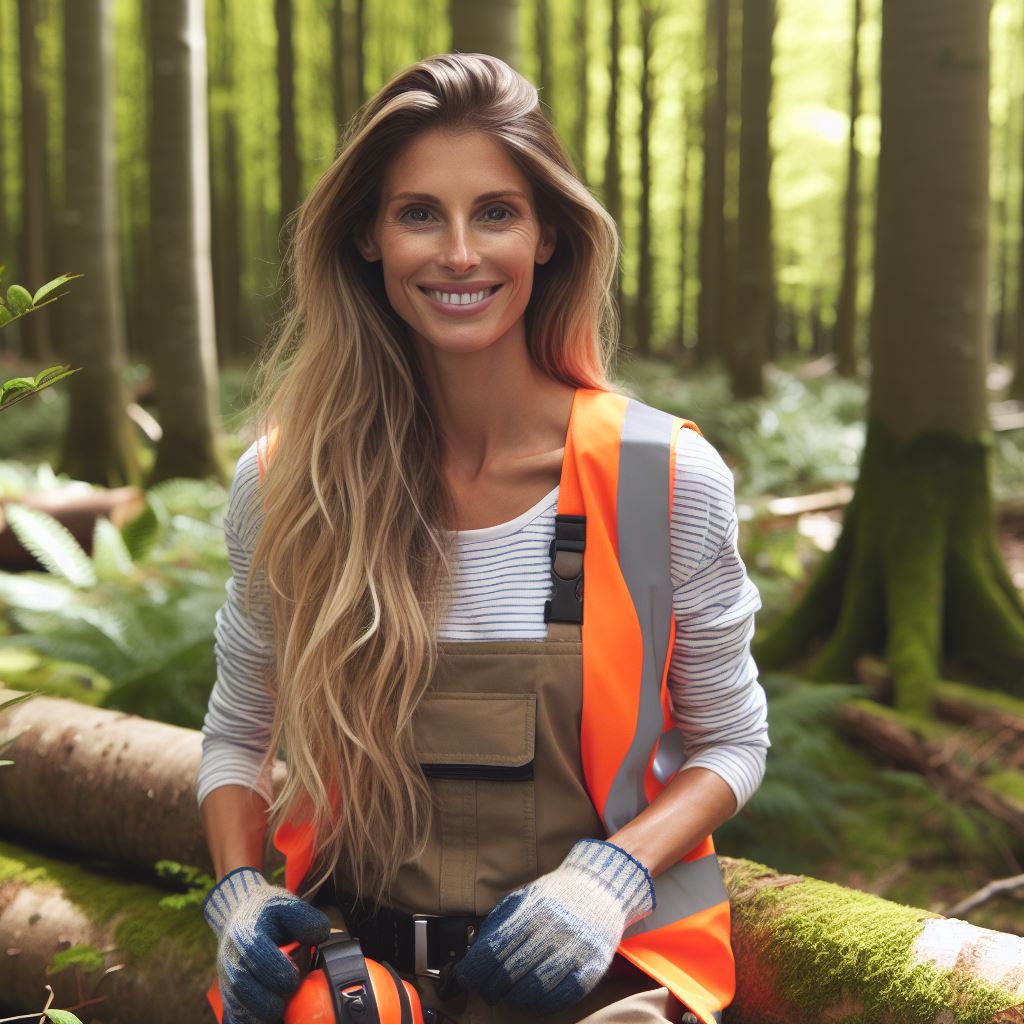Introduction
Forestry management in the UK is a crucial topic that demands attention. Discussing best practices in it is important because it promotes sustainable management of forests.
This blog section aims to highlight the key practices followed in the UK for effective forestry management.
We will cover aspects like tree planting, harvesting techniques, wildlife conservation, and community involvement.
By understanding these practices, we can contribute to the preservation and enhancement of our forests.
Overview of Forestry Management in the UK
General Introduction to Forestry Management in the UK
Forestry management in the UK is an important practice that involves the sustainable management of forests and woodlands.
It encompasses various activities such as planting, maintaining, and harvesting trees, as well as protecting and conserving natural resources.
Significance of Forestry in the UK Economy and Environment
Forestry plays a crucial role in the UK’s economy and environment. It contributes significantly to the country’s Gross Value Added (GVA), providing employment opportunities and supporting rural economies.
Additionally, forests in the UK serve as important habitats for wildlife, help in carbon sequestration, and provide recreational spaces for the public.
Stakeholders Involved in Forestry Management
Government
The UK government plays a key role in forestry management by creating policies and regulations to ensure sustainable practices.
It provides funding, support, and guidance to promote the growth and health of forests.
Forestry Commission
The Forestry Commission is a government body responsible for overseeing forestry management in England.
It aims to protect and expand forests, enhance biodiversity, and promote sustainable forest management practices.
Landowners
Private landowners, including individuals, businesses, and organizations, own a significant portion of forests in the UK.
They have responsibilities for managing their land sustainably and may partner with forestry experts for advice and assistance.
Forestry Professionals
Forestry professionals, including forest managers, ecologists, and arboriculturists, play a crucial role in managing forests.
Personalized UK Career Consulting
Receive tailored career guidance designed just for you. Get actionable steps and expert support to boost your career in 1-3 days. Take control of your career now.
Get StartedThey assess tree health, conduct tree surveys, develop management plans, and implement sustainable forestry practices.
Environmental Organizations
Various environmental organizations, such as Woodland Trust and National Trust, are actively involved in forestry management in the UK.
They work to protect and restore forests, promote biodiversity, and raise public awareness about the importance of sustainable forestry.
Local Communities
Local communities living near forested areas are important stakeholders in forestry management.
They may participate in community forestry initiatives, have access to woodland resources, and benefit from forest-based activities such as tourism and recreation.
Timber Industry
The timber industry is a significant stakeholder in forestry management.
It relies on sustainable timber production, responsible harvesting, and efficient supply chains to meet the demand for wood products while minimizing environmental impact.
In fact, forestry management in the UK is a vital practice that balances economic, environmental, and social needs.
With the involvement of various stakeholders, sustainable forestry practices can be implemented, ensuring the long-term health and prosperity of the country’s forests.
Best Practices in Forestry Management
Best practices mean in the context of forestry management
In the context of forestry management, best practices refer to the most effective and efficient methods, techniques, and strategies used to maintain and utilize forest resources sustainably.
These practices focus on maximizing the benefits derived from forests while minimizing negative impacts on the environment, biodiversity, and local communities.
Best practices encompass a wide range of activities, including forest planning, timber harvesting, reforestation, and conservation efforts.
By adhering to best practices, forest managers can ensure the long-term viability of forests and the ecosystem services they provide.
These practices also contribute to the economic and social well-being of the local communities that depend on forests for their livelihoods.
Your Dream Job Starts with a Perfect CV
Get a tailored CV and cover letter that captures your unique strengths and stands out in your industry. Let us help you make an unforgettable first impression.
Get StartedImportance of sustainable forest management practices
Sustainable forest management practices play a crucial role in maintaining the health and productivity of forests.
Forest managers practicing sustainability fulfill present needs without compromising future generations’ ability to meet theirs in timber, non-timber forest products, and other resources.
This approach considers the ecological, economic, and social aspects of forest management.
Sustainable forest management practices ensure the conservation of biodiversity, protection of soil and water resources, and mitigation of climate change.
They also promote the sustainable use of forest resources, fostering local economies and providing employment opportunities.
Furthermore, sustainable forest management practices enhance the resilience of forests against natural disturbances such as wildfires, pests, and diseases.
Principles and guidelines set by the UK government for forestry management
The UK government has established principles and guidelines to ensure sustainable forest management across the country.
These principles include promoting ecosystem health, delivering multiple benefits, and supporting a resilient forest sector.
Guidelines emphasize the importance of maintaining forest biodiversity, protecting soil and water quality, and involving local communities in decision-making processes.
The government also encourages the integration of traditional and local knowledge into forest management practices.
In addition, the UK government promotes the use of sustainable timber and non-timber forest products, as well as the restoration and expansion of forests to increase their capacity for carbon sequestration.
Measures taken to ensure biodiversity conservation and ecosystem management
The UK government has implemented specific measures to protect biodiversity and manage ecosystems within forested areas.
One key measure is the creation of protected areas, such as national parks and nature reserves, to safeguard critical habitats and species.
These areas are managed with strict regulations to prevent habitat destruction and ensure the survival of endangered species.
Optimize Your LinkedIn for Success
Boost your LinkedIn profile with a professional bio, keyword-rich headline, and strategic recommendations that attract recruiters. Stand out from the crowd and get noticed.
Optimize NowThe government also promotes the implementation of sustainable forestry certification schemes, such as the Forest Stewardship Council (FSC), to encourage responsible forest management.
These schemes ensure that forests are managed in a way that maintains biodiversity, protects water quality, and respects the rights of indigenous communities.
Additionally, the UK government supports research and monitoring programs to assess the health of forest ecosystems, identify potential threats, and develop appropriate management strategies.
These measures aim to maintain the ecological integrity of forests, safeguard biodiversity, and preserve the valuable services they provide to society.
In general, embracing best practices in forestry management is crucial for ensuring sustainable forest management.
Define practices, grasp their importance, follow government guidelines, implement measures for biodiversity conservation. Protect and preserve forests for present and future generations.
Read: Aquatic Health Management by UK Experts
Certification and Accreditation
Certification and Accreditation in Forestry Management
- Certification and accreditation play a crucial role in ensuring the sustainability and responsible management of forests.
- They provide a framework for evaluating and verifying the adherence to standards and best practices.
- By certifying and accrediting forestry management practices, it becomes easier to monitor and measure the environmental, social, and economic performance.
- It enhances transparency and accountability, enabling stakeholders to make informed decisions.
- Certification and accreditation also improve market access by demonstrating compliance with international requirements.
- These processes provide assurance to consumers and investors that products are sourced sustainably.
- Moreover, certification and accreditation contribute to building trust and credibility in the forestry sector.
- They encourage continuous improvement and innovation in forestry practices.
Recognized Certification Schemes in the UK related to Forestry Management
- The United Kingdom has several recognized certification schemes that promote responsible forestry management.
- The Forest Stewardship Council (FSC) is one of the most widely recognized certification schemes globally.
- It sets standards for responsible forest management, ensuring environmental, social, and economic benefits.
- The Programme for the Endorsement of Forest Certification (PEFC) is another recognized certification scheme in the UK.
- PEFC provides assurance that timber and non-timber forest products come from sustainably managed forests.
- In addition, there are regional schemes like the UK Woodland Assurance Standard (UKWAS) specific to the UK.
- UKWAS verifies compliance with legal requirements, while also addressing environmental and social aspects of forestry management.
- These certification schemes contribute significantly to achieving sustainability goals and preserving biodiversity.
Certification in Promoting Responsible and Sustainable Forestry Practices
- Certification plays a vital role in driving responsible and sustainable forestry practices.
- It encourages forest owners and managers to adopt sustainable practices, reducing deforestation and promoting reforestation.
- By adhering to certification standards, the integrity and health of ecosystems are better preserved.
- This leads to improved wildlife habitats and enhanced protection of endangered species.
- Certification also promotes the sustainable use of forest resources, ensuring their availability for future generations.
- It supports local communities by creating opportunities for income generation through sustainable forestry practices.
- Moreover, certified forests provide recreational and cultural benefits, contributing to the overall well-being of society.
- Certification schemes help mitigate climate change by promoting carbon sequestration and reducing greenhouse gas emissions.
- They encourage responsible logging practices, minimizing soil erosion, and protecting water resources.
- Furthermore, certification schemes foster collaboration among stakeholders, facilitating knowledge sharing and cooperation.
- As a result, forestry management becomes more participatory and inclusive, integrating various perspectives and expertise.
Basically, certification and accreditation are crucial in ensuring responsible and sustainable forestry management in the UK.
These processes provide various benefits by promoting transparency, accountability, and market access.
FSC, PEFC, and UKWAS certifications actively verify compliance, drive biodiversity preservation, ecosystem protection, and support local communities.
By adopting certification, the forestry sector contributes to a greener future while maintaining economic viability.
Read: UK Aquaculture Technician: Career FAQs

Innovative Approaches in UK Forestry Management
Technological advancements used in forestry management
- Use of drones to assess forest health and identify areas for management intervention.
- Adoption of GIS (Geographic Information System) technology for mapping and monitoring forest resources.
- Integration of advanced sensors and equipment to measure tree growth and optimize harvesting.
- Implementing digital platforms for real-time data collection, analysis, and decision-making.
Role of data analytics and remote sensing in improving forest monitoring and management
- Data analytics help in predicting forest behavior, identifying risks, and planning sustainable management strategies.
- Remote sensing provides accurate information on forest change, allowing for timely interventions and conservation efforts.
- Utilizing satellite imagery and aerial surveys enables efficient forest monitoring at large scales.
- Data integration from various sources enhances forest management efficiency and accuracy.
Innovative techniques or initiatives being implemented in the UK
- The use of LiDAR (Light Detection and Ranging) technology for precise forest inventory and carbon assessment.
- Promotion of agroforestry, silvopasture, and urban forestry practices to enhance landscape diversity and resilience.
- Implementing tree planting initiatives to combat deforestation, mitigate climate change, and enhance ecosystem services.
- Collaboration between forestry and technology sectors to develop and deploy innovative digital tools for forest management.
The UK forestry sector has embraced technological advancements and innovative approaches to enhance forest management practices.
The use of drones with advanced sensors, GIS technology, and digital platforms has revolutionized data collection, analysis, and decision-making processes.
Data analytics and remote sensing play a vital role in monitoring forest health, predicting risks, and planning sustainable strategies.
The UK also implements innovative techniques and initiatives such as LiDAR technology, agroforestry practices, tree planting initiatives, and collaboration between forestry and technology sectors.
These efforts aim to improve forest inventory, conserve biodiversity, mitigate climate change, and maximize the benefits of forest resources.
Read: Urban Arboriculture: Challenges & Rewards
Challenges and Future of Forestry Management in the UK
Current Challenges Faced by the Forestry Management Sector in the UK
- Limited land availability for expanding forest areas poses a significant challenge.
- Climate change and unpredictable weather patterns affect forest health and growth.
- Pests and diseases, such as ash dieback, threaten the viability of forests.
- Increasing demand for timber and wood products puts pressure on sustainable forestry practices.
- Lack of investment and funding opportunities hinder the development of the sector.
Potential Solutions to Overcome These Challenges
- Implement effective land-use planning to optimize available space for forest expansion.
- Adopt adaptive management techniques to mitigate the impacts of climate change on forests.
- Strengthen biosecurity measures to prevent the spread of pests and diseases.
- Promote responsible sourcing of timber and encourage sustainable consumption practices.
- Encourage public-private partnerships to attract investment and increase funding options.
Trends and Prospects for Forestry Management in the UK
The future of forestry management in the UK holds promising opportunities and evolving trends:
- Increased emphasis on ecosystem services provided by forests, such as carbon sequestration and biodiversity conservation.
- Growing interest in agroforestry systems that combine traditional farming with forested areas to enhance sustainability.
- Advancements in technology and data-driven approaches to improve forest monitoring and management.
- Rise in community-led initiatives and participatory approaches to foster social engagement and stewardship.
- Expansion of the urban forestry concept to enhance green infrastructure and improve urban living conditions.
Essentially, the forestry management sector in the UK faces various challenges, but there are potential solutions to overcome them.
Concerted efforts promise a bright future for UK forestry management, showcasing emerging trends for sustainable practices benefiting people and the environment.
Read: A Day in the Life of a UK Arboriculturist
Conclusion
We’ve explored UK forestry management, revealing best practices and evolving sustainable approaches in a rich landscape of insights.
The gravity of adopting these practices extends far beyond the confines of merely ensuring the vitality of our forests.
It transcends into a comprehensive strategy encompassing the preservation of biodiversity, the pivotal role in climate change mitigation, and the overarching resilience of our environment.
Embracing and championing best practices, we actively shape a blueprint for a sustainable coexistence with the natural world in managing our forests.
In this concluding section, the clarion call resounds for collective action and unwavering commitment to the cause of sustainable forestry management in the UK.
The imperative is clear: it is our shared responsibility to become stewards of the environment, advocating for and actively participating in initiatives that prioritize responsible forest practices.
As we stand at this juncture, it is not merely a call to awareness but a rallying cry for a united front.
Together, let us sow the seeds of change, cultivate a culture of environmental stewardship, and reap the rewards of a greener, healthier future for ourselves and the generations yet to come.
Our commitment today shapes the legacy we leave for the tomorrows that follow, and through concerted efforts, we can truly redefine the trajectory of our relationship with the natural world.
[E-Book for Sale]
500 Cutting-Edge Tech Startup Ideas for 2024 & 2025: Innovate, Create, Dominate
$19.99 • 500 Tech Startup Ideas • 62 pages
You will get inspired with 500 innovative tech startup ideas for 2024 and 2025, complete with concise descriptions to help you kickstart your entrepreneurial journey in AI, Blockchain, IoT, Fintech, and AR/VR.




